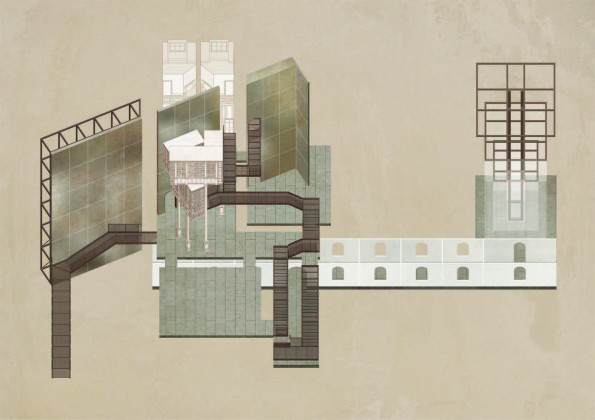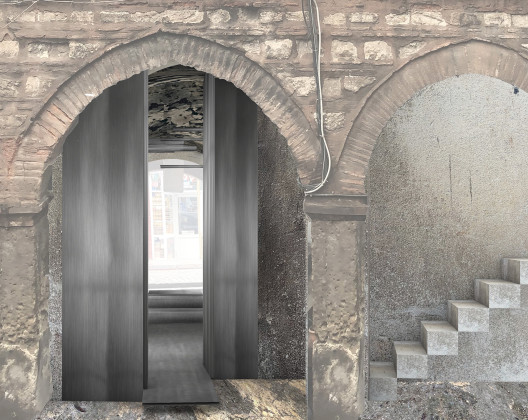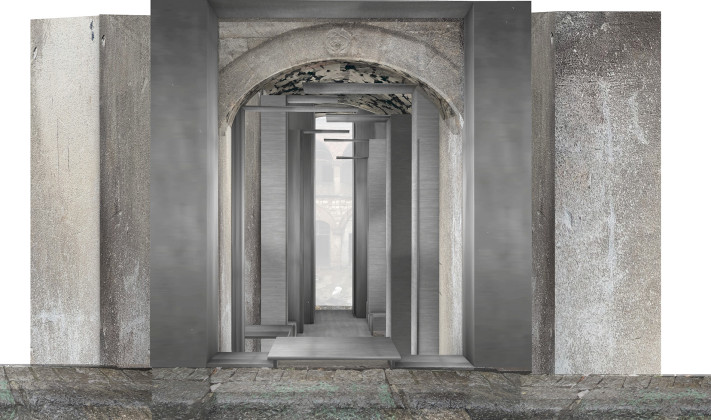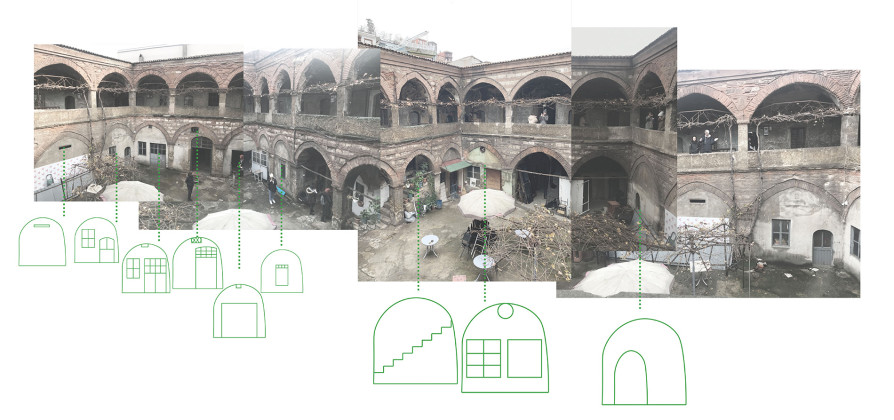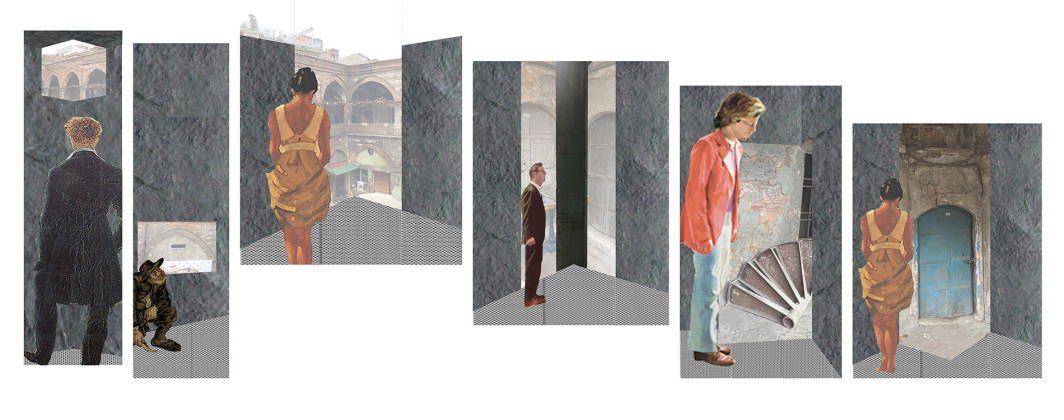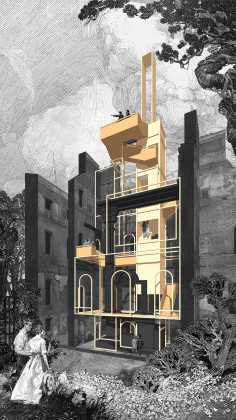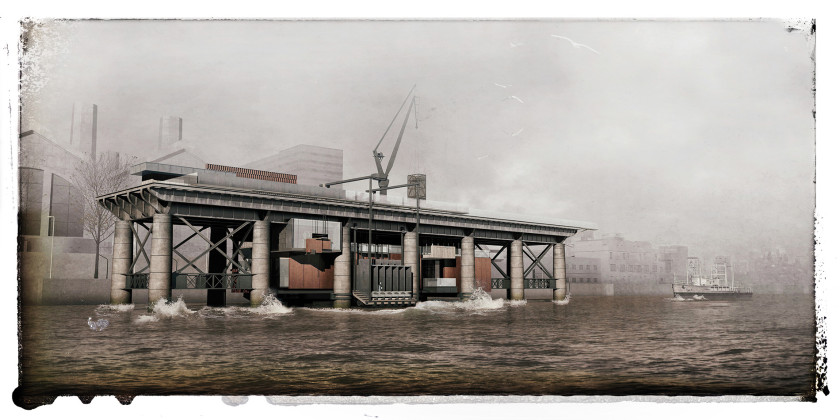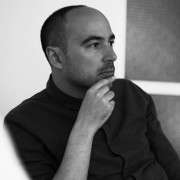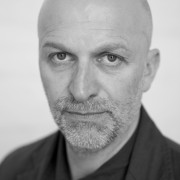Radical Heritages
Invited by the Department of Interior Design at Istanbul Bilgi University, Prof. Graeme Brooker, Head of Interior Design at the Royal College of Art, London was in Istanbul for workshop and public talk. Looking at Radical Heritages, the workshop focused on a Han in Eminönü, while the public talk at SALT Galata presented a broader overview and positioning for the future of interior design. Can Altay, Head of Interior Design at Istanbul Bilgi University, who hosted Brooker in Istanbul has interviewed him on how interior design, as a spatial discipline deals with the existing spaces, and its role in the future of the built environment (or the world as we know it).
Can Altay: Your talk and recent teaching was titled radical heritages. what is heritage in the context of a field such as interior design, which is totally about reworking and reconfiguring the existing?
Graeme Brooker:Heritage can be neatly surmised as the things left behind which following generations inherit. These can be tangible things such as buildings, or intangible such as memories, traditions and beliefs; all of which play an important role in the development of a ‘culture’. This simple answer masks a complexity, a complication which concerns the decisions, judgements, values placed on what is left behind and inherited – the legacies of past and future generations. I consider Interiors to be fundamentally about working with and reusing the existing – whether buildings, objects, memories, both tangible and intangible material. Therefore, interior architecture/design has a significant role to play in the discernment of how heritage, legacy, is shaped for the inheritance of future generations. What we (a generation) leave behind for others – be that buildings, traditions, beliefs and so on. I use the term ‘Radical’ in relation to heritage, because quite often the perception of heritage can be one which is conservative, conformist and a cautious approach to legacies – linked to preservation and conservation discourses. I would like to challenge that notion through the introduction of the term ‘radical’ – a call to arms for a more progressive understanding of how heritage is a complex, problematized system that requires and invites inventive speculations. Radical Heritages is the term I use to describe more challenging approaches to reusing the extant.
CA: I guess there is a question of value, how it seems that value is attributed to certain things/buildings, whereas you seem to suggest that there is value in everything and every space. what is the significance of this notion for you?
GB: Value is intrinsic to all forms of working with the existing, and by this I mean not just economics, but also the values of intuition, judgement, contingencies, materials; all instruments that ask the re-user of the existing to be consistently agile and open to how they edit, suppress, enhance what is already in existence. This requires very particular apparatus, which I often refer to as a sensibility. This sensibility, a receptivity to the existing means, that ‘value’ is often to be found in all things. There is also a very important and critical dimension to looking for value in this sensibility as it precludes the desire to demolish and start again – A Tabula Rasa approach which for me was all about the 20th Century and Modernity. I am all for the Tabula Plena: working with the not new, finding value in everything, and learning what to do with those values. It’s the 21st century. We are in a dangerously climatically-challenged situation. ‘Single-use’ in all aspects of the environment, plastics, buildings, cities, even humans possibly, is no longer a viable option or position. I equate new-build with single use, so value in everything already existing is an extreme priority – one which we can longer afford to overlook.
CA: Your work helps a great deal in clarifying interior design as field of practice, particularly with the way you have come to lay out the process in your book Re-readings (co-authored with Sally Stone) through strategies and tactics. Can you tell us how you’ve reached this structure of thought?
GB: In my own education I was always frustrated by the lack of a presence of interiors specific discourses, and the utilisation of other processes of thinking, namely architecture, to illustrate this discipline - which I always felt didn’t quite fit the work I was thinking, doing or that I wanted to do. I was always left with a sense of ‘How does Interiors differ to other spatial practices?’, ‘what are its germane theories and histories’? And so on. I was often just fed a diet of architectural content. I didn’t mind this of course, but the interior always underwent an ‘othering’ which was opaque and led to its disappearing before my very eyes. I sought out some solace in site-specific art, which had some resonance, and those theory/history discourses, but felt that it lacked ideas around meaningful inhabitations of space. It was when I started teaching that I was very keen to avoid repeating this situation, and so over a number of years I started to develop content to document what I thought might make the interior distinct and more present. I was very aware of the gendering and professionalization of the subject, which was in its nascent origins of publications and conferencing, and spatial ideas, particularly around philosophy, yet I found almost nothing on processes, principles, or historical material which really examined the material culture of the subject. The students I taught at the time were hungry for this too, so I embarked on a series of talks for them to chart ideas, studies and processes. The structures of thought were really about how the interior differed to other practices through its relationship to, and its learning from, the container on which it was often located. Therefore, to describe these processes became the analysis, and the strategies were derived from how I could see approaches were being formulated in the studies we discussed. The tactical elements could also be discerned as the instruments of these thoughts. These talks became a very comprehensive collection and it was a student who recommended I should publish them. I approached a publisher who informed me about an approach from someone with similar ideas, so I met Sally and we pooled our resources and started the work! The work is all about the approaches to engagement with the existing building.
CA: Going back to values about given spaces; our understanding around how we treat this world we are born into, and in some sense inherited has changed a great deal with the evident changes in climate and earth in general. what do you think interior design has to offer? You mentioned there will eventually be less ‘new-built’ and more ‘re-worked’ buildings. Are interiors becoming the forefront of spatial disciplines? And do you draw a distinction around who designs interiors? GB: Due to the fact that all education in interior programmes has much of, if not all, of its content based upon the reuse of the existing to house new programmes, I always strongly argue that the interior is at the forefront of sustainable approaches to the built environment. No other discipline I am aware of perpetually employs the reworking of existing buildings and matter as its main modus operandi. Therefore, the interior has lots to offer as a subject and way of thinking because its agents are steeped in processes of understanding and utilising these approaches and therefore are exploring and developing viable and enduring approaches to the world around us. In general, I tend not to draw a distinction between who can and who cannot design interiors as in my view protectionist agendas around title and the profession actually stifle agility, openness, and the opportunity to challenge the boundaries of the subject through the background, experience, and education of its agents. In my view, title protection is not and never has been an indicator of quality. We have all experienced good and bad doctors and lawyers. Instead, I like to think of non-regulation as an open invitation to participate in the subject, broaden its remit and understanding, contest how it is approached. That said I would strongly advocate an education in the field, as just because you may call yourself an interior designer it doesn’t mean you have the learning with which to succeed and make a meaningful contribution to the subject.
CA: I think interior architecture relates to all matters of inhabitation, and I always like to mention that all systems and institutions we occupy can be transformed through how we inhabit them. And as we are both inhabiting the higher education world, I’d like to close our conversation with look into that context. What are the emerging/emergent tools and strategies in teaching interior design? Very broadly, if you were to outline your approach in how you tackle interior design education today, what are the must-have ingredients?
GB: Emerging tools in teaching focus on the agility to adapt your own learning in relation to the support that my students need in order to articulate their voice in relation to their approaches to the interior. In my role at the RCA I work with a very diverse cohort of students who come to us with very different prior experiences. I love this challenge, which I view as the strategic response to their learning, knowledge, and using all kinds of transformative tools for shaping their knowledge into further meaningful action upon existing matter. For instance, language is a very overlooked subject in design teaching. What I mean by that is just how you talk to each other and what do words mean in relation to your work. I like to spend time with my students in my platform Interior Reuse with an early research project, integrating with studio work, describing the languages and words we use to understand adaptation approaches. I often ask students to illustrate words with case studies and build knowledge through exemplars. These become very good research books. Skill tools such as ‘thinking through making’ approaches synthesise how space is formed and inhabited and we use this a lot in the programme as it chimes directly with materiality, space and engaging with the existing. We surmise all of our work through three phases in year one entitled ‘proximities’, ‘Inhabitations’, ‘Identities’. This three phase approach introduces students to site (proximities), occupation (inhabitation), materiality (identities). These are our ‘must-haves’ for the learning journey.
CA: Following up with education, especially in interior design projects, much attention and energy is given to imagining new ‘use’ to given settings. In a way I admire the idea of designers as use/narrative/fiction generators, and often have employed similar dynamics in my own teaching. However, I am also curious to what degree interior designers have access to programming in that sense, and whether you see this kind of ‘imagining new uses’ as a strategy or tactic for interior design?
GB: Imagining new uses using say narrative as a device, is for me strategic in the sense that new forms of inhabitation, reusing the existing, or occupying yet-to-be-built interiors are often capable of being scripted. That is forms of occupancy can be understood through narratives of use which then can be utilised to approach to the project, its organisation, its formation, making and so on. That said, I am more interested in narratives of the existing, rather than imported abstractions, which I sometimes find a little removed and obscure. I find that they are far more useful in helping to unlock tangible or intangible elements of the spaces, projects which are being worked with.
 23.05.2020
23.05.2020



